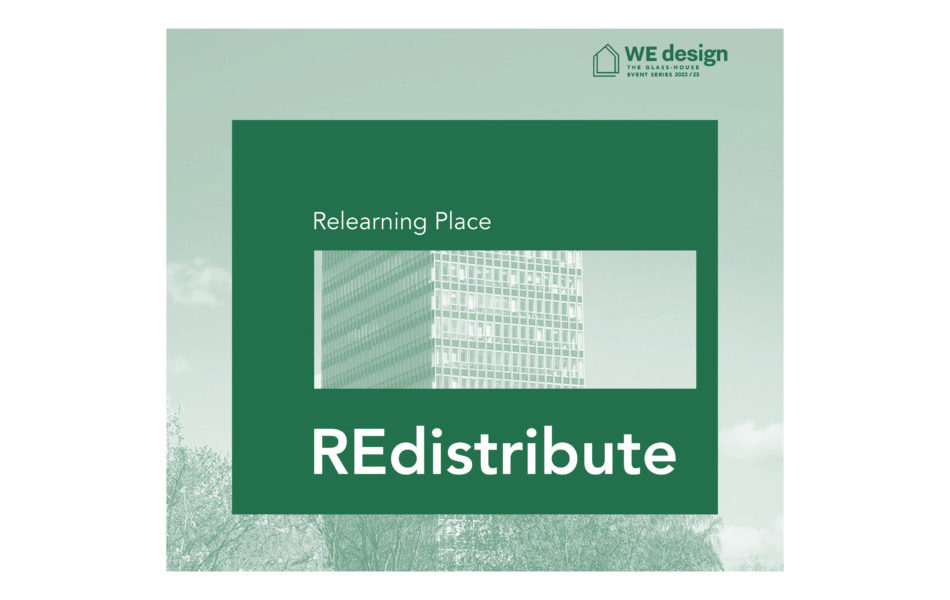Written by:
On 1 March, we welcomed people to the University of Sheffield’s Arts Tower for our second event in this year’s WEdesign event series, Relearning Place: REdistribute. At this event in collaboration with tutors and students from the Sheffield School of Architecture, we explored the redistribution of assets, products, crafts, skills, and services at global and local scale through collaborative placemaking.
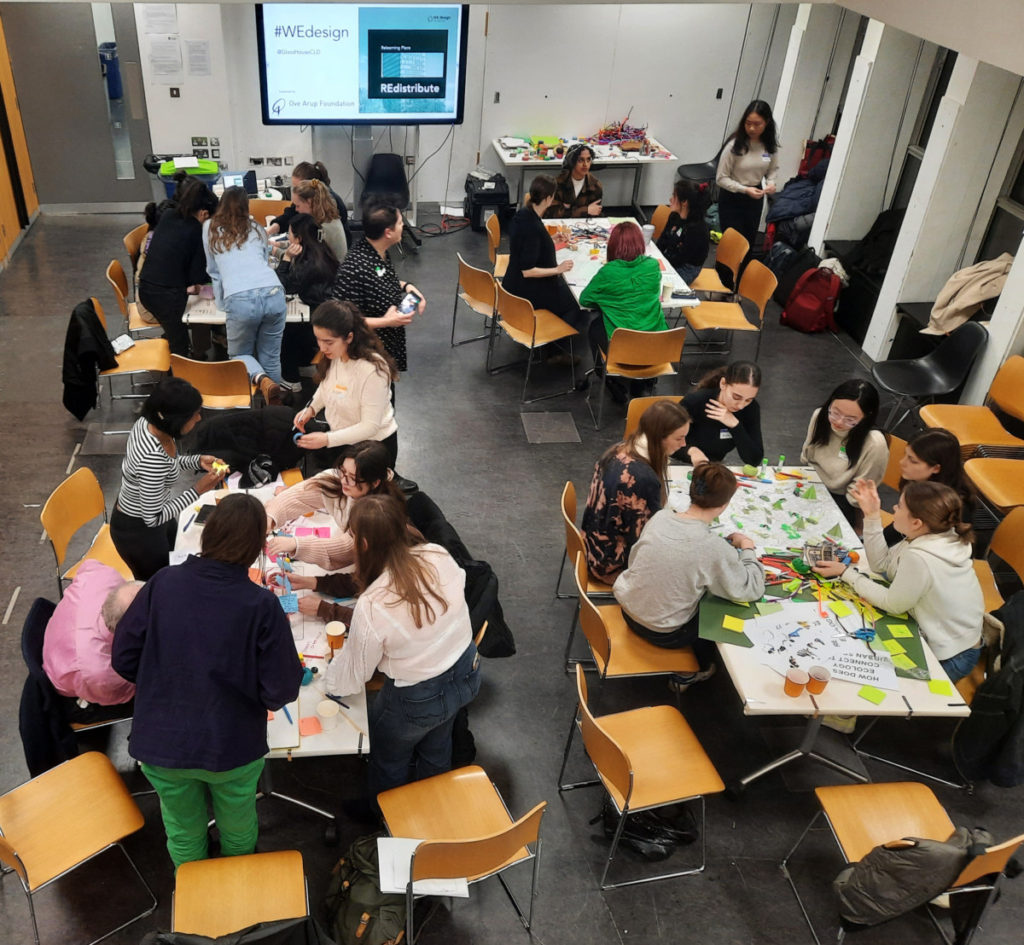
The evening brought together a diverse group of students, community activists and built environment professionals to reflect on the global influences and challenges we face. The event was framed with the question: what do we need to relearn about our places and how we can redistribute power within placemaking and the built environment?
The Glass-House team worked alongside third year BA Architecture students, who helped facilitate the evening’s co-design activities, along with their tutor, Year 3 Leader Leo Care and Co-director of the university’s urban room, Live Works.
As the students led the guests up to the 16 Floor, the room started to fill with curious voices. There were moments for mingling and discussion before we asked the participants to join one of the tables, each of which explored the event theme of REdistribution through one of four different lenses: community, education, practice and ecology.
Before we launched into our co-design task, Leo kicked of our discussion by introducing the theme of REdistribute in the context of work that the students were doing in their degree course around trade, migration and how the distribution of goods and people over the centuries has influenced how we have shaped our settlements, and how our towns and cities provide for the diverse people who populate and pass through them.
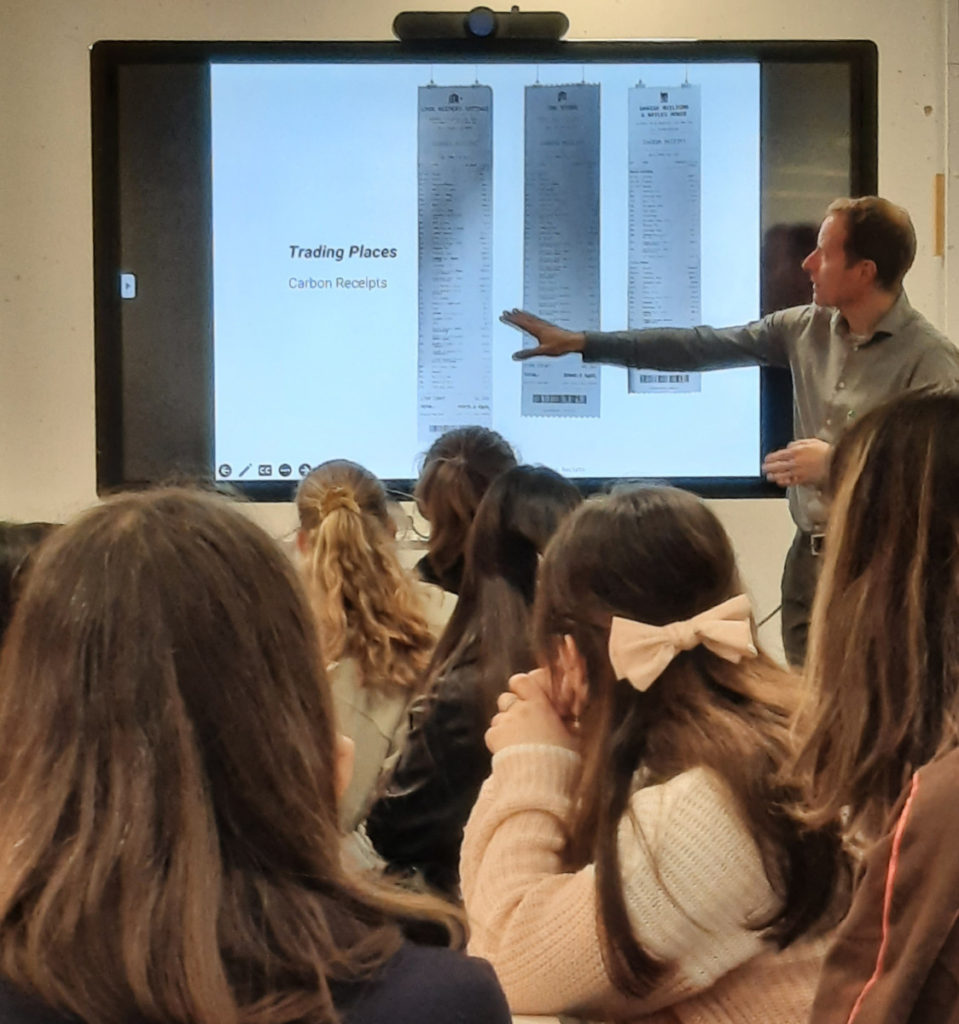
Co-design propositions for change
We then moved into the co-design task, which invited our event participants and student facilitators to work together to explore the theme of redistribution through the lenses of community, education, practice and ecology.
Each student facilitation team brought their own perspective to their chosen lens, prompting discussion with carefully thought-out questions and props to guide the participants through the discussion. Each table not only had its own lens, but also a distinctly different feel that had been curated by each student facilitation team and the questions they chose to lead with:. “How can we involve other disciplines within the architectural field to redistribute dialogue?”; “What is community to you?”; “How should we redistribute collaborative power in education?”
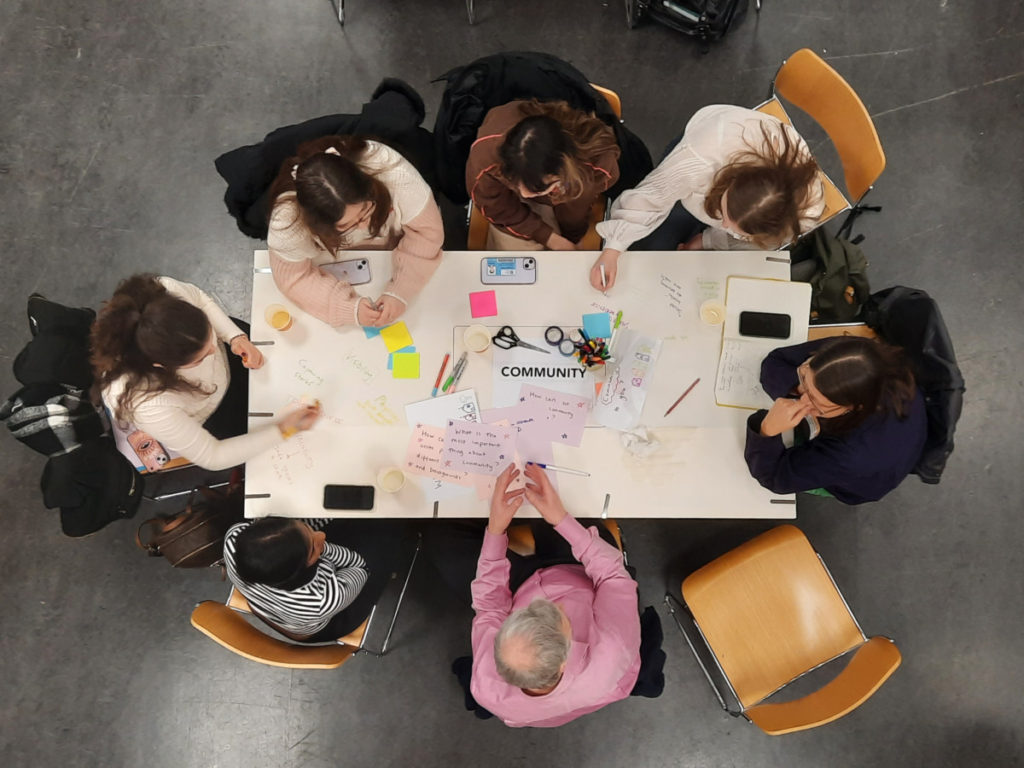
The students’ ultimate goal was to work with our event participants to co-design a proposition that responded to the theme of this event, bringing together voices with the creation of 3D models using a range of craft materials to showcase their ideas.
Practice
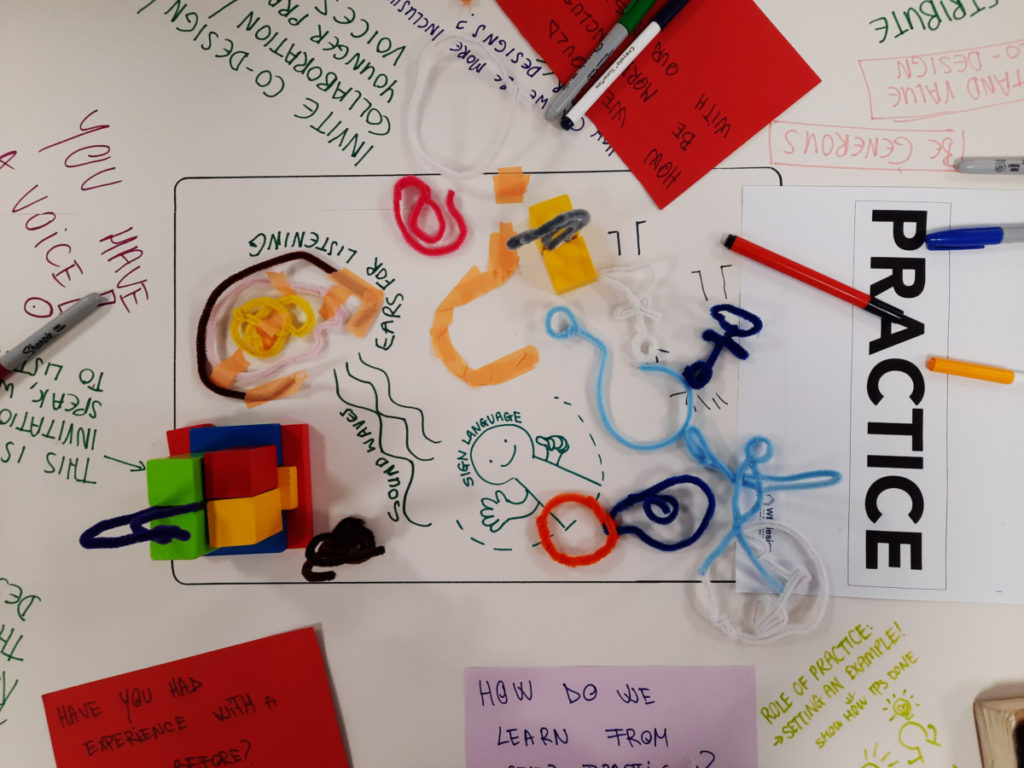
What are the important considerations when thinking about practice in the context of placemaking and how can we make practice, and the design it produces, more inclusive ? This group contemplated the power of listening as a methodology for understanding the actual wants and needs of those they are engaging with, and for moving away from assumptions to practising listening.
This formed part of broader discussion which questioned the redistribution of power within the design of places. How can the act of active listening become a catalyst for shifting the distribution of power among communities and design practitioners? What can the redistribution of power, resources and time do to enable you to include a diversity of voices within any conversation around placemaking and to ensure that these voices actually help shape the design of our places?
Our Practice group depicted the importance and power of listening as their key message. Positioning figures of ears on pedestals to champion redistributing power, influence, resources and time to support more inclusive and responsive design.
Ecology
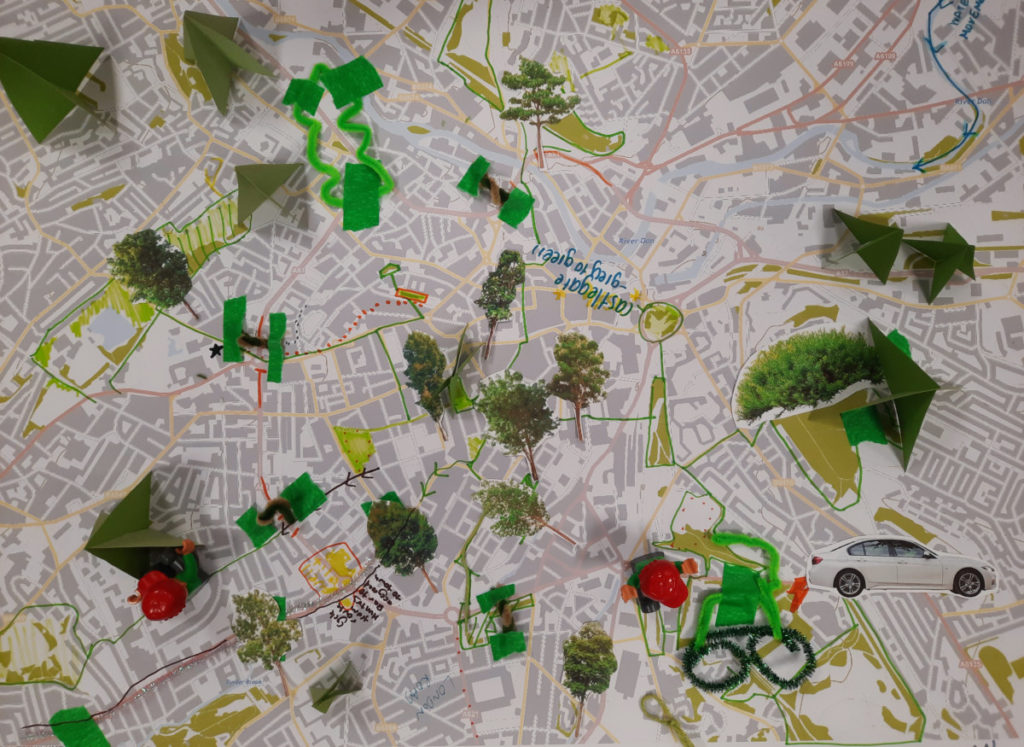
Access to green space has long been associated with the distribution of power, with underrepresented and minority groups often being those with the least access to green spaces. Our Ecology group began their conversation exploring how to redistribute access to green spaces within and across communities.
Starting their exploration with a focus on Sheffield, this group considered how they could diversify access to green space and at the same time, increase the density of Sheffield’s urban forest. The overarching tone foregrounded not only the densification of green spaces but more importantly, their redistribution and the interconnectivity between them.
Their model began as a schematic representation of ideas specific to Sheffield which transformed and populated the city with numerous green spaces and urban forests. They wanted to create tangible links between the different spaces through green trails and living green bridges. Their proposition for change was relevant to any city, focusing on redistributing our streetscapes to create safe and accessible routes to and between green spaces, and taking a more holistic view of green infrastructure within an urban context.
Community
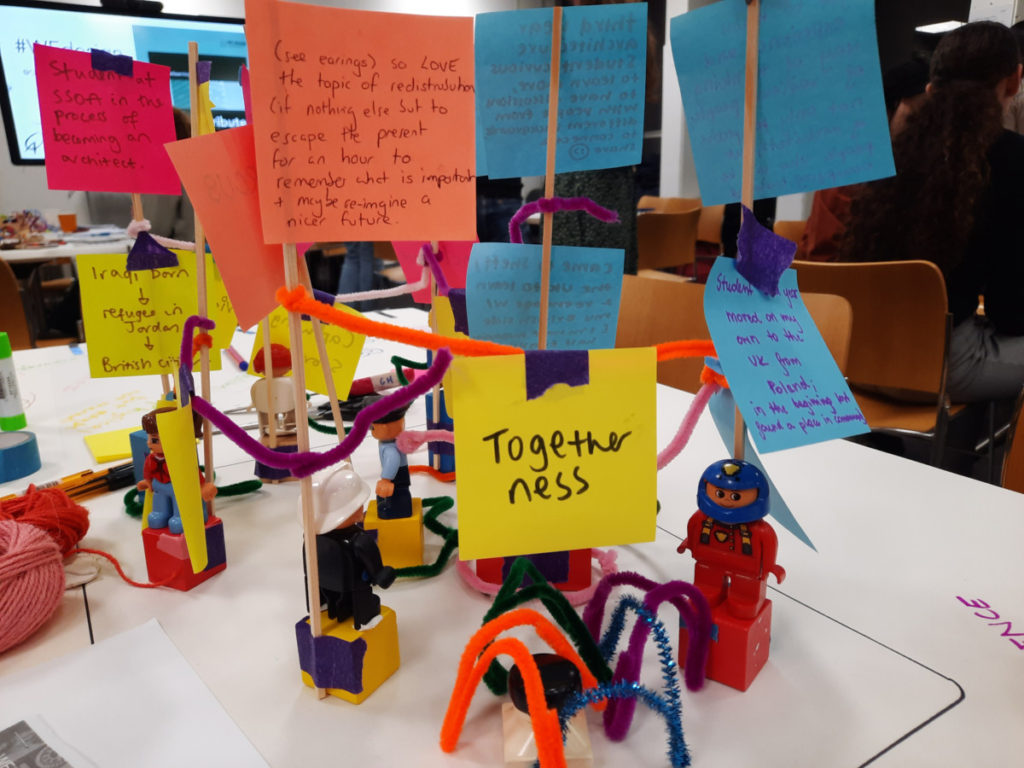
Our Community Group started with the question, “Why are we here today?” This served both to introduce those participants working together in this group to each other and to prompt a question around how communities, as well as our sense of community, are formed. Within this context, their table became their community for this particular event.
They noted that you can create communities by simply putting them at the table together, but that identifying a shared focus, or mission, can also help galvanise collaboration within that community. This began with them sharing personal stories with one another. Through creating these spaces for connection that invite people into each other’s realities, we can begin to develop community.
However, they raised an important provocation around the significance of understanding where the story is being told, and by whom. They contended that within the context of placemaking, redistributing who has the power to tell stories can shape the very nature of city and community making.
This group represented their idea through celebrating the voices of their community with a procession of flags. The flags showcased who they were and why they were each here, their hopes, desires, and shared values for forming empowered communities. Each flag was interconnected, while figurines that represented each of them faced both inwards, looking into their new community, and outwards, extending a hand as an invitation to others.
Education
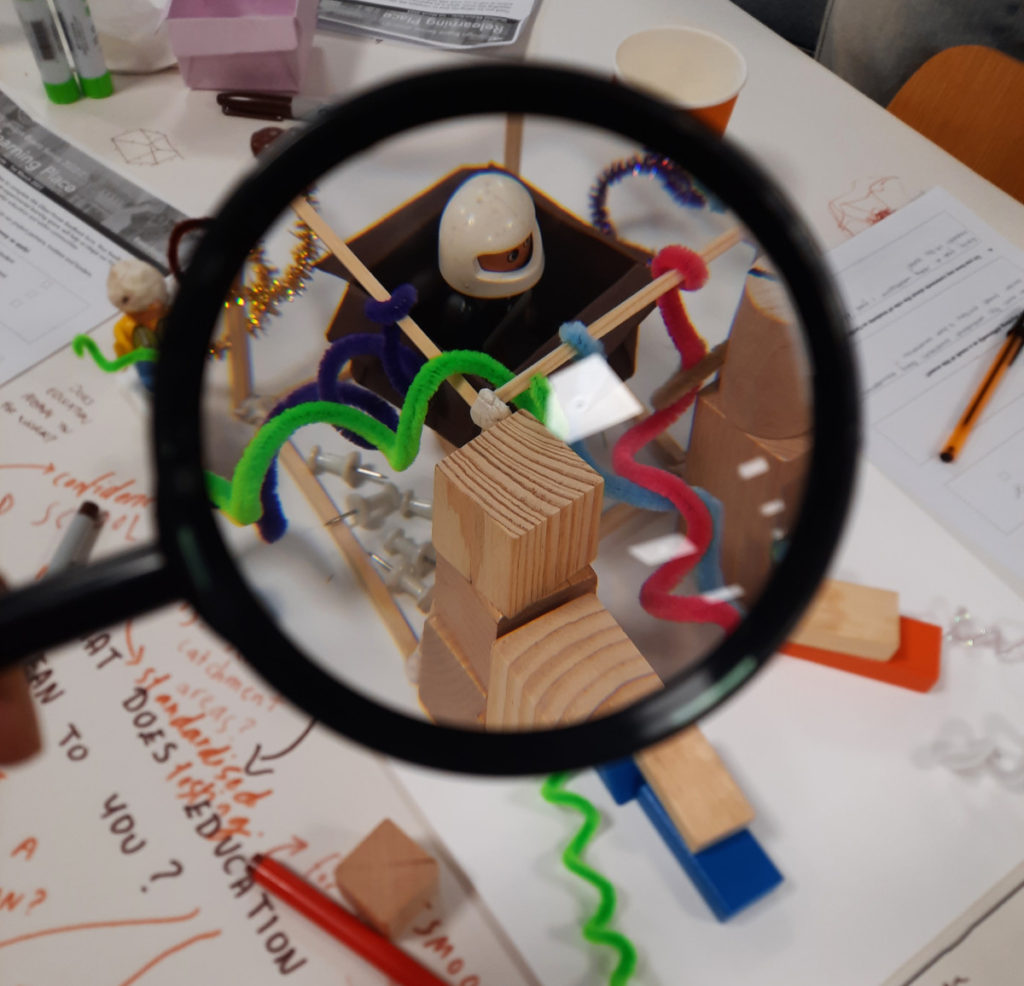
This group compared education to a box, articulating it as a system that distributes us into different spaces and places based on class, affluence, ability, achievement and indeed, interests. They discussed the elitism and classism that can often be associated with different avenues of education, identifying this as a barrier to making education more accessible and equitable, posing the question, “What defines a good school?”
This prompted another question, “Does education prepare us for life?” Shared cultures and experiences have nuanced our education. Having participants from both different walks of life within Sheffield and from different parts of the world helped the group explore how their personal experiences in education had influenced them.
They collectively recognised that education is a combination of formal and informal schooling, lived and taught experience, all of which contributes to each of us becoming active citizens, participating in placemaking.
The group built a model representing the formal box that education can put us into, and depicted the redistribution of both access to and types of education as a means of helping us break out of that box. This group’s proposition asked how to allow education to nurture us as individuals without confining us to such rigid pathways, and how can this redistribution help us achieve an education system which favours equity and equality?
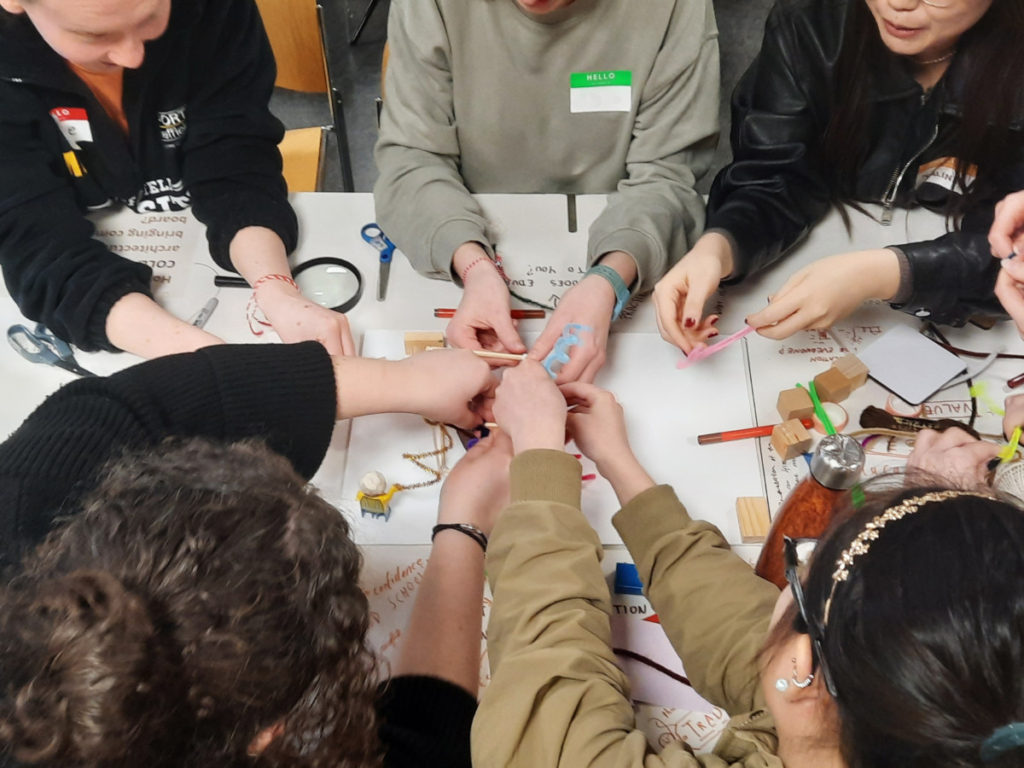
Golden Threads
In the discussion that followed we pulled out some common threads and provocations that had emerged throughout the evening:
- We spoke of the importance of generosity, in how we live, work, learn and play together, and how this could be aided by stepping back and exploring what we could redistribute to help support this. Creating more inclusive and equitable places starts with a willingness to explore how we might redistribute space, time, resources and power.
- What role can redistributing specifically time and resources within the context of placemaking do to help us redistribute power? We explored, for example, the proportion of budgets allocated to engaging with the community, and the limited time for developing mutually beneficial relationships and partnerships to shape places more collaboratively. Many in the room felt that taking a good look at this was the first step towards shifting the current power structures.
- We need to value listening and create more space to listen to others. There is a power in stories to help us find one another and allow us to look both inwards and outwards. We also need to create those spaces for connection both in our physical landscapes and in our processes, where we can share our stories with each other.
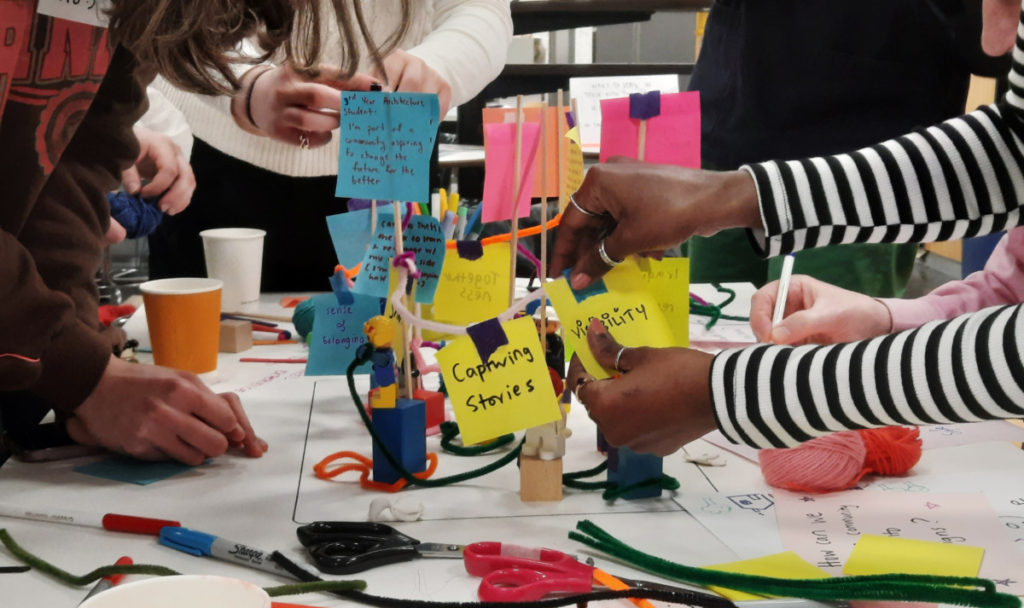
We would like to thank all the participants in Sheffield who attended and offered their time, thoughts, and generous contributions as well as our wonderful student facilitators, contributors and Leo Care for hosting the evening at the University of Sheffield Arts Tower. We left the event feeling both inspired and encouraged by the rich conversation, the many evocative ideas, and above all, by the generosity of everyone in the room.

